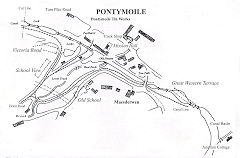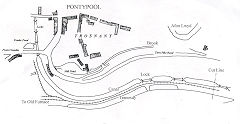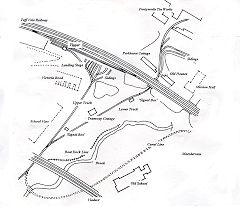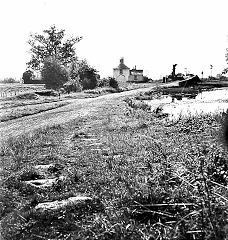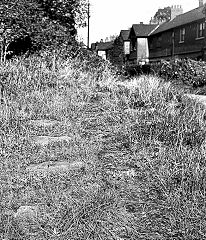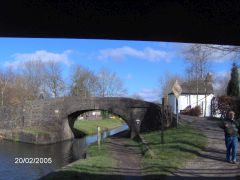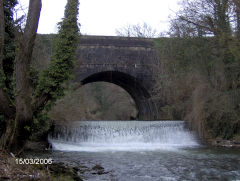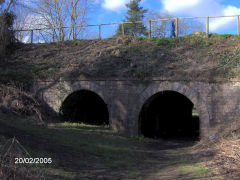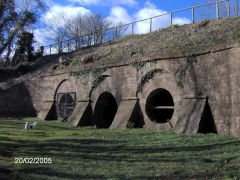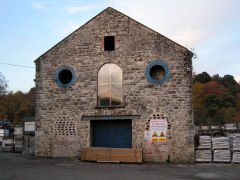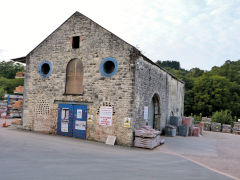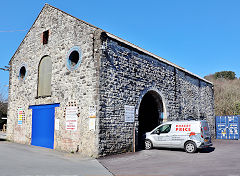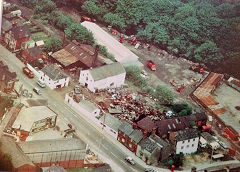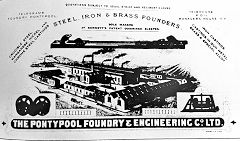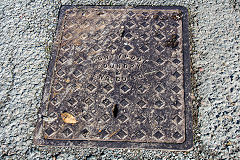The Industrial Archaeology and History of the Eastern Valley
Or click on the button to go to :-
Click on the thumbnail to enlarge a photo or map and sometimes read more about it.
Then click 'Full Size' on the toolbar to see it in all its glory.
Griffithstown and Panteg
Along the canal bank and railways
A footpath ran between the two sections of Panteg Steelworks and lead to the original NAHR station building, derelict but still standing in 2009, and an unusual footbridge over the Hereford line.
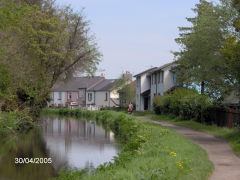
Griffithstown canalside
|
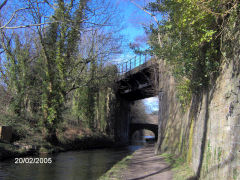
Griffithstown skew bridge
|
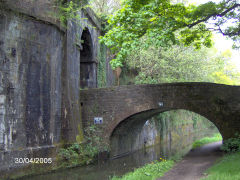
Griffithstown skew bridge
|
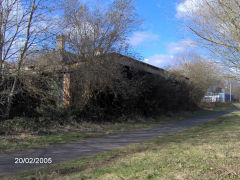
Griffithstown Station, MRCC
|

Bridge over the GWR (NAHR)
|
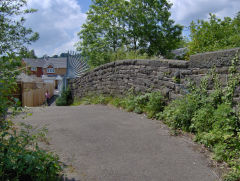
Bridge over the GWR (NAHR)
|

Panteg Station GWR (NAHR)
|
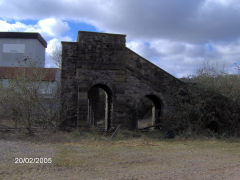
Panteg Station footbridge
|
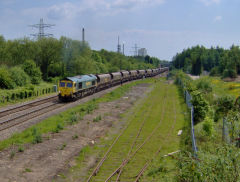
Panteg, Freightliner '66547'
|
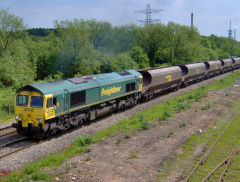
Panteg, Freightliner '66547'
|
|
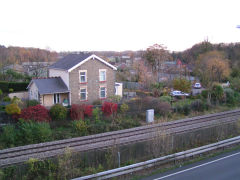
Pontypool NAHR Station
|
County Hospital, Griffithstown - ST 2927 9956
A narrow-gauge tramway ran from a siding on the MRCC line to deliver coal to the hospital boiler house. It crossed the Monmouthshire Canal to the hospital grounds on what appears to be simply a couple of girders on concrete abutments. The girders have gone but the abutments remain.The line was a simple 'L' shape, the wagon being moved by hand. I don't think it even boasted a siding. It's on the 1965 map but not on the 1948 map, I'd suspect it was closed soon after, when natural gas arrived.
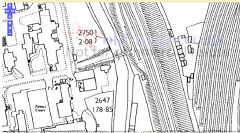
County Hospital tramway, 1965
|
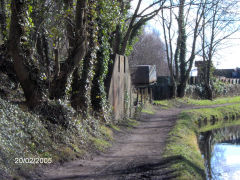
County Hospital tramway, Panteg
|
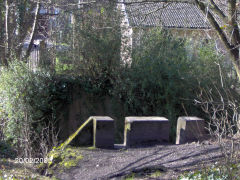
County Hospital tramway, Panteg
|
Pontypool Gasworks, New Inn - ST 2960 9980
The second gasworks in Pontypool opened in 1946, right beside Pontypool Road loco sheds, with extensive sidings coming off the Hereford line. The works closed in 1973 and the site is now an industrial estate. A public footpath ran around the site, beside the Hereford line, and to avoid the railway connecting line, a pedestrian subway was built. This still exists, fenced off and very overgrown, with the footpath now crossing the trackbed. The foundations of the main gasholder, which was dismantled in 2005, also lurks in the undergrowth.
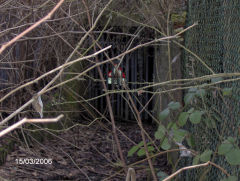
Pontypool Gasworks subway
|

Pontypool Gasworks subway
|
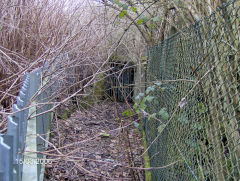
Pontypool Gasworks subway
|
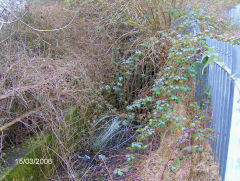
Pontypool Gasworks subway
|
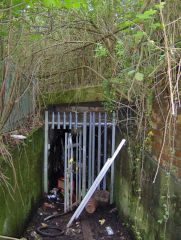
Pontypool Gasworks subway
|

Pontypool Gasworks subway
|
Panteg Steelworks - ST 2965 9840
The Panteg Steelworks began operation in 1973 but had mixed success until 1883 when acquired by the forerunners of Richard Thomas and Baldwins Ltd. A period of expansion and modernisation followed right up to the late 1980s. Subsequently the works considerably reduced its activities and rail traffic ceased in 1989 before the final closure in 2004. In 2009 the upper part of the works had been demolished, the lower part was still standing but derelict. The site is now a housing estate.
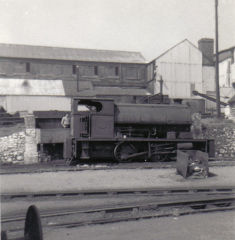
Peckett 2146 of 1953
|
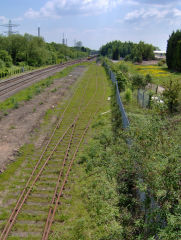
Panteg steelworks sidings
|
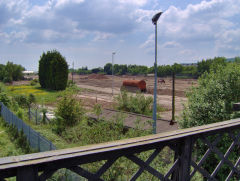
Panteg steelworks site
|
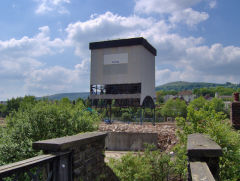
Panteg steelworks site
|
Cwmynyscoy and the tramroad
Cwmynyscoy Tramroad
The Cwmynyscoy tramroad operated from c1800 to c1900, possibly to the 1930s as the quarry tramway. It connected the quarries to exchange sidings on the Taff Vale Extension Railway and under it to the Pontymoile Tinplate Works. Most of it can be followed as footpaths or lanes. Baxter calls this the Blaendare Tramroad but it is usually accepted that the 'Blaendare Tramroad' was a connection to the Trosnant Tramroad in the Glyn Valley. The Cwmynyscoy line certainly appears to have reached Blaendare at some time but possibly to the brickworks through the tunnel rather than the ironworks.
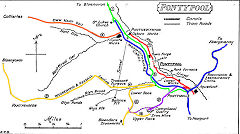
Tramroads around Pontypool
|
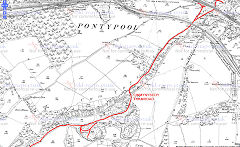
Cwmynyscoy Tramroad
|
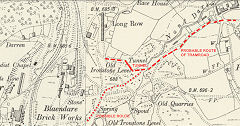
Cwmynyscoy Tramroad
|
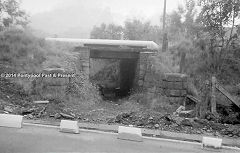
TVER Tramroad bridge
|
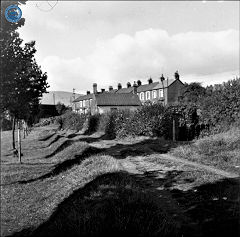
Tramroad Cottage
|
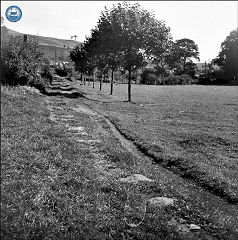
Tramroad Cottage
|

Tramroad at Rock Hill Road
|
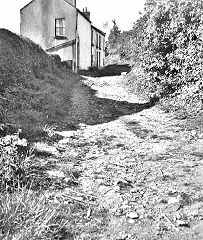
Tramroad at Victoria Road
|
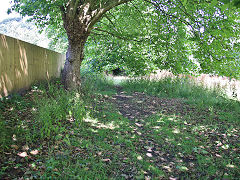
Cwmynyscoy Tramroad
|
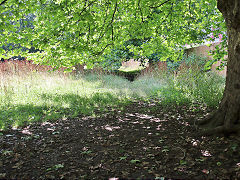
Cwmynyscoy Tramroad
|

Cwmynyscoy Tramroad
|
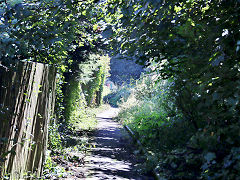
Cwmynyscoy Tramroad
|
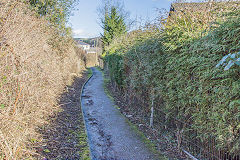
Cwmynyscoy Tramroad
|
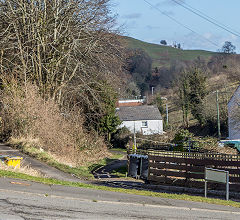
Cwmynyscoy Tramroad
|
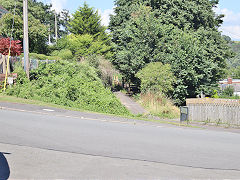
Cwmynyscoy Tramroad
|
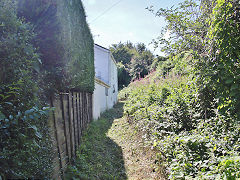
Cwmynyscoy Tramroad
|
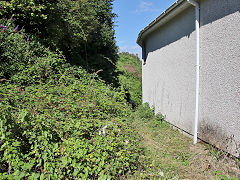
Cwmynyscoy Tramroad
|
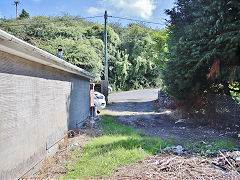
Cwmynyscoy Tramroad
|

Cwmynyscoy Tramroad
|
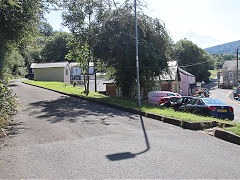
Cwmynyscoy Tramroad
|

Cwmynyscoy Tramroad
|
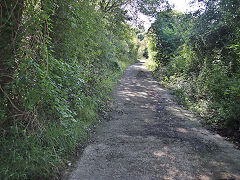
Cwmynyscoy Tramroad
|
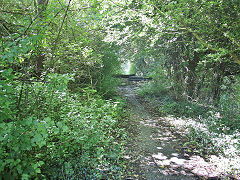
Cwmynyscoy Tramroad
|
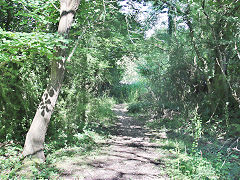
Cwmynyscoy Tramroad
|
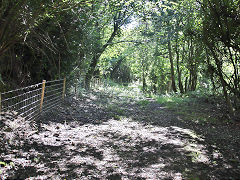
Cwmynyscoy Tramroad
|
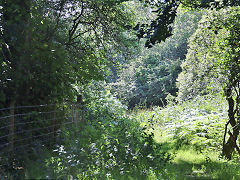
Cwmynyscoy Tramroad
|
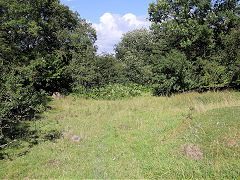
Cwmynyscoy Tramroad
|
|
Drainage Level beside the tramroad - ST 2799 9974
This tunnel appears to be a drainage level into Nant Dare for ironstone workings higher up.

Nant Dare drainage tunnel
|
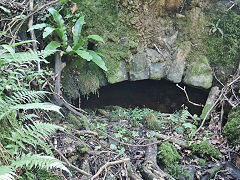
Nant Dare drainage tunnel
|
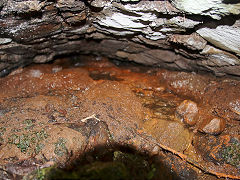
Nant Dare drainage tunnel
|
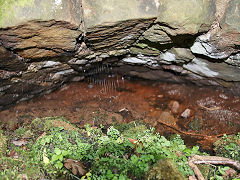
Nant Dare drainage tunnel
|
Tunnel to Long Row - ST 2772 9956
This may be the tunnel described by a visitor from America in 1828 as being on a tramroad to Pontymoile. It doesn't seem to be very deep so maybe a covered route under slagheaps as at Garndyrys Ironworks, Blaenavon. We visited this tunnel in 2017 but in 2021 it appears to have been covered over. However, as consolation, we found a tramplate sticking out of the bank in the same area.
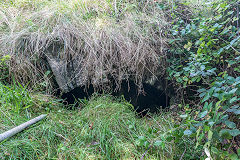
Tunnel at Upper Race
|
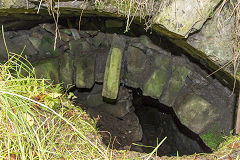
Tunnel at Upper Race
|
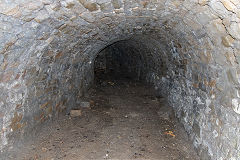
Tunnel at Upper Race
|
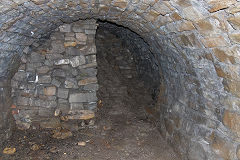
Tunnel at Upper Race
|
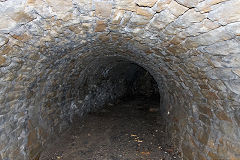
Tunnel at Upper Race
|
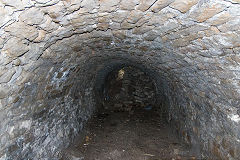
Tunnel at Upper Race
|

Tunnel at Upper Race
|
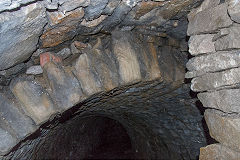
Tunnel at Upper Race
|
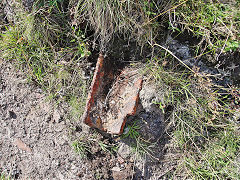
Tramplate at Upper Race
|
Cwmynyscoy Quarries - ST 282996
Quarrying first began c1826 and the lower quarry continued to be worked until c1976. The upper quarry, Cwm Quarry also known as Tamplins Quarry, is shown as disused from 1900. It was connected to the lower quarries and the tramroad by a tunnel. The foundations of the 'Lion' pub, known locally as the 'Lions Den', an ancient beerhouse opened before 1845, are at ST 2838 9928, next to the ruins of Ashtree Cottages, built before 1881. The exit of the mine tunnel from Porthmawr, Upper Cwmbran, is reputedly in the quarry, as used by the ladies for shopping trips to Pontypool.
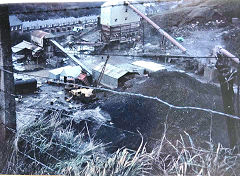
Cwmynyscoy quarry, c1970
|
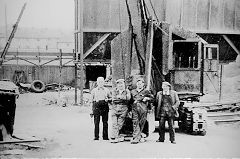
Cwmynyscoy quarry,
|
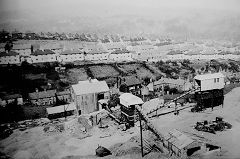
Cwmynyscoy quarry,
|
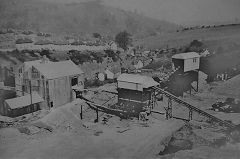
Cwmynyscoy quarry,
|
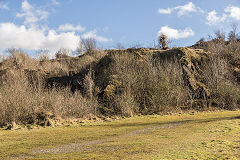
Cwmynyscoy lower quarry
|

Cwmynyscoy lower quarry
|
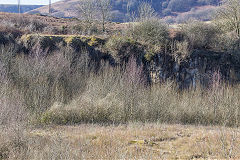
Cwmynyscoy lower quarry
|
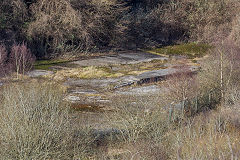
Cwmynyscoy lower quarry
|
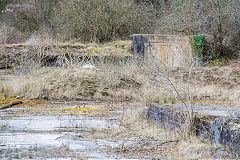
Cwmynyscoy lower quarry
|

Cwm or Tamplins quarry
|
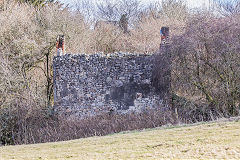
Ashtree Cottages, Penyrheol
|
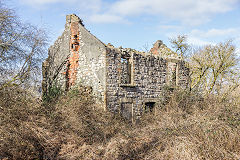
Ashtree Cottages, Penyrheol
|
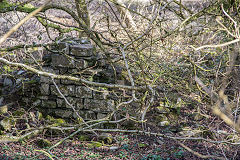
The 'Lions Den' beerhouse
|
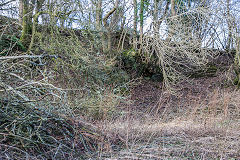
Quarry below New Farm
|
|
|
Pontypool Town
The MRCC through Pontypool
The MRCC has almost vanished under new roads through Pontypool.
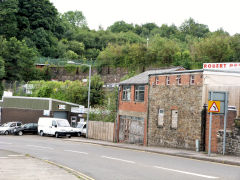
MRCC embankment
|
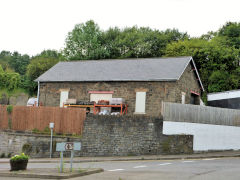
MRCC Goods shed
|
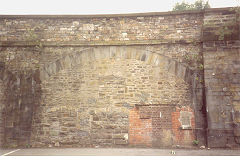
Railway arch on Crane Street
|
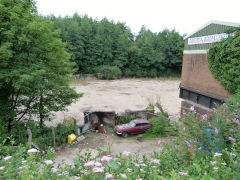
Site of original gasworks
|
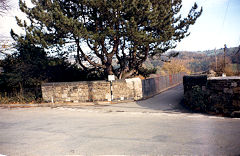
Lower Bridge Street bridge
|
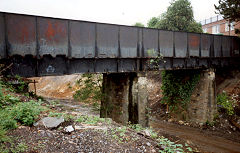
Lower Bridge Street bridge
|

George Street bridge, 1967
|
|
Pontypool Tramway - ST 2830 0081
The Pontypool Tramway, ran from Lower Mill, Pontymoile, to Osborne Forge at Pontnewynydd. It was opened as a tramroad c1825 and is shown on the 1843 Tithe Map. Up until 1836 a loop served the Pontypool Park furnace. It was converted to a railway at some time and the tracks appear to have been lifted on the 1920 OS map. It passed under the canal at Pontymoile through the still-existing tunnels and can be traced up the lane, across Usk Road and past Pontymoile tinplate works. The tramway carries along the riverbank through the leisure centre car park. The tunnel under the town centre was originally constructed c1825 but has probably been enlarged to take the railway. It is still maintained as it contains pipework for one of the services. There are openings to the right onto the steep riverbank and then it is blocked up. It is untraceable beyond here as it carried on along the riverbank to Town and Osborne Forges. Modern housing and roads have obliterated the area but in places the Western river banks and walls show their age and heritage.
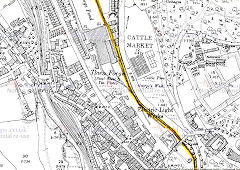
Pontypool Tramway, 1901
|
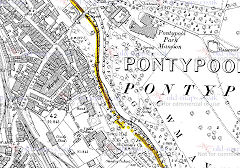
Pontypool Tramway, 1901
|
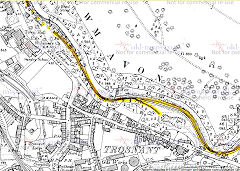
Pontypool Tramway, 1901
|
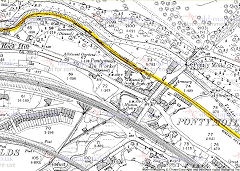
Pontypool Tramway, 1901
|
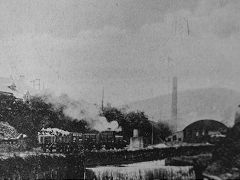
A train near Osborne Forge
|
|
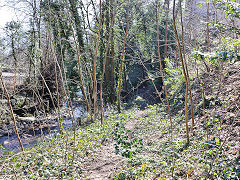
Tramway near Town Bridge
|
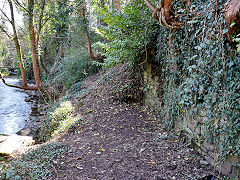
Tramway near Town Bridge
|
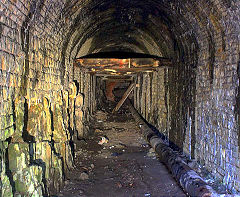
Tramway tunnel interior
|
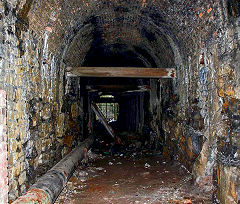
Tramway tunnel interior
|
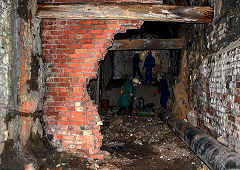
Tramway tunnel interior
|
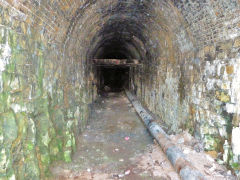
Tramway tunnel interior
|
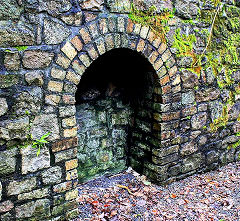
Tramway tunnel interior
|

Tramway tunnel portal
|
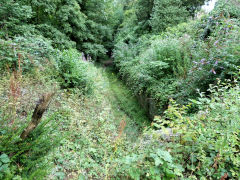
Tramway tunnel approach
|

Tramway tunnel approach
|
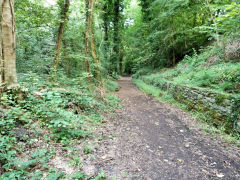
Tramway looking South
|

Tramway looking South
|

Tramway looking South
|
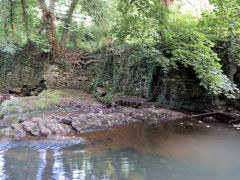
Tramway looking South
|

Tramway looking North
|

Tramway looking North
|
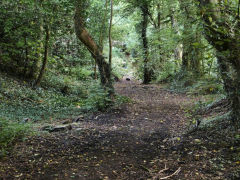
Tramway looking North
|
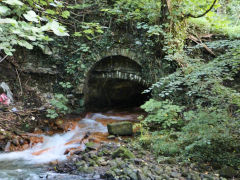
Trosnant tramway bridge
|
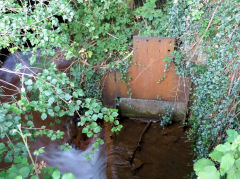
Trosnant stream sluice gate
|
|
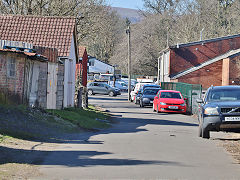
Tramway to Pontymoile
|
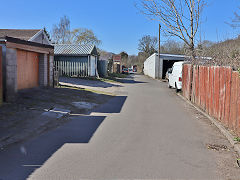
Tramway to Pontymoile
|
Trosnant weir - SO 2842 0068
The weir was the principal source of water for the leat to the Pontymoile Tinplate Works and the Lower Mills, running alongside the tramway. The single Eastern sluice gate controlled the level of water behind the weir while the Western pair controlled the flow of water into the leat. On the opposite side of the river a leat led to Park Forge with the water returning to the river from the upper of the three tunnels further downstream.
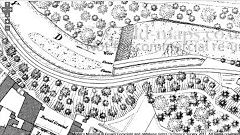
Trosnant weir, 1881
|

Trosnant weir, Pontypool
|

Trosnant weir, Pontypool
|
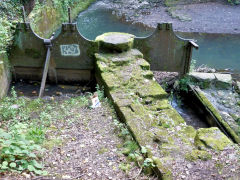
Trosnant weir, Pontypool
|

Trosnant weir, Pontypool
|

Trosnant weir, Pontypool
|
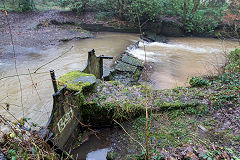
Trosnant weir, Pontypool
|
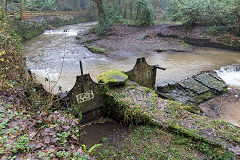
Trosnant weir, Pontypool
|
Pontymoile reservoir - SO 2882 0055
This reservoir was just above Pontymoile Tinplate Works and an overflow tunnel led back to the river, controlled by a sluice gate.
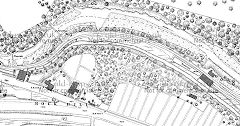
Pontymoile reservoir, 1881
|
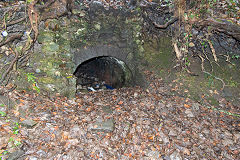
Reservoir overflow tunnel
|
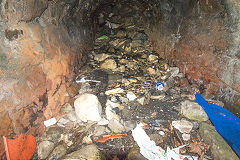
Reservoir overflow tunnel
|
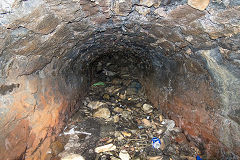
Reservoir overflow tunnel
|
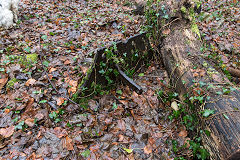
Reservoir sluice gate
|
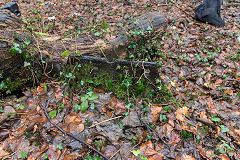
Reservoir sluice gate
|
Pontypool Park Furnace
Pontypool Park Furnace dates from the 1750s and was roughly where the leisure centre stands now. It was dismantled in 1831 and only the watercourse is shown on the 1843 Tithe Map. The watercourse comes from the weir upstream from the leisure centre. A loop on the Pontypool Tramway served the furnace and there may have been a tramroad link to the forge at Pont-y-Felin which could have used the central tunnel of the Eastern aqueduct under the canal.
Riverbank tunnels - SO 2860 0070
Three tunnels emerge from the Eastern riverbank in quick succession. The first is quite small and the water from it crossed the river on an aqueduct and appears to have fed the leat from the weir to the Lower Mill. The second may have been the outlet from the waterwheel at Park Forge and the third is for the stream.
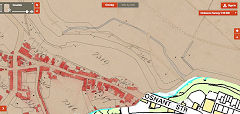
Tithe map of Pontypool Park
|
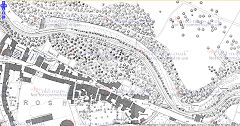
Pontypool Park, 1881
|
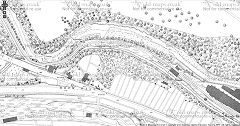
Pontypool Park, 1881
|
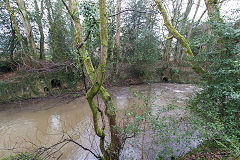
The three park tunnels
|
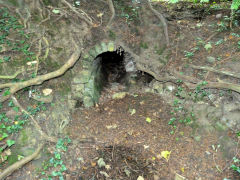
Pontypool Park upper tunnel
|
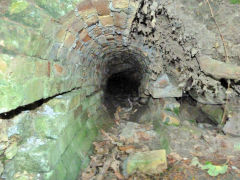
Pontypool Park upper tunnel
|

Pontypool Park upper tunnel
|
|
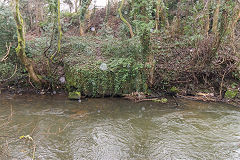
Park aqueduct abutments
|
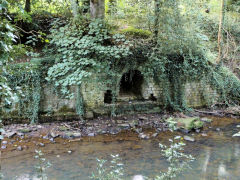
Pontypool Park middle tunnel
|
|
|
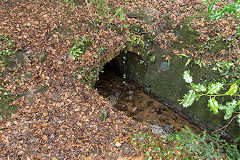
Pontypool Park lower tunnel
|
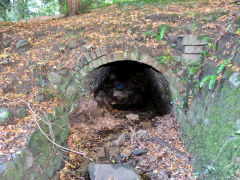
Pontypool Park lower tunnel
|
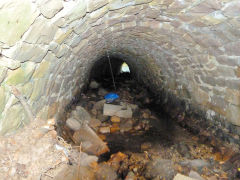
Pontypool Park lower tunnel
|
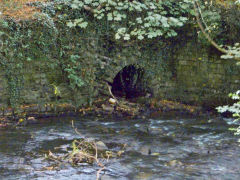
Pontypool Park lower tunnel
|
Twmpath Colliery - SO 2777 0043
Twmpath Colliery is shown as 'disused' on the 1881 map. Even though it is marked as a coal mine it may well have started as an ironstone mine possibly linked with the Wainfelin iron mine.
Wern Hill Colliery - SO 2758 0080
Wern Hill Colliery operated from the 1890s to the 1930s, latterly owned by the Mynydd Maen Colliery Co and connected to both Mynydd Maen and the Elled Colliery underground.

Twmpath Colliery, Pontypool, 1881
|
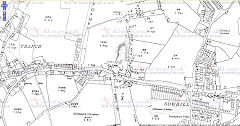
Wern Hill Colliery, Pontypool, 1920
|
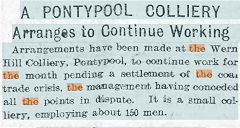
Wern Hill Colliery, Pontypool, 1909
|
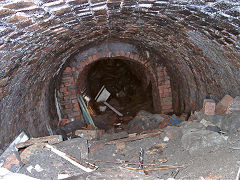
Wern Hill Colliery, Pontypool, 2005
|
Pontypool's other tunnels
There was a network of tunnels under the main shopping streets of Pontypool, Crane Street, Market Street and towards George Street. From 'Old Pontypool', "They were like delivery tunnels to the shops with an access hatch and steps to each individual shop. There seemed to be what could be described as Loading Bays down there as well, They went as far as the end of Market St." and " Go down the steps (below Crane St.) and right on the Bottom there is a steel Manhole cover, when I worked on the building of Fine Fare we had to remove this cover there is a lovely stone tunnel going up Crane St. and also turns right to George St."
Pontnewynydd
Wainfelin and Tranch Iron Mine - SO 2751 0171
The origins of Wainfelin iron mine go back to before 1765. It was originally worked from the Glyn Valley end for the 'Old Furnace' open from 1576 to its closure in 1830. The Pontnewynydd entrance appears to have been a new use for the tunnel as the original arch here had a keystone inscribed 'CHL 1831'. Gordon Rattenbury says that it then connected Glyn Pits with Osbourne Forge. Coal raised at the Glyn Pits was sent to the nearby Balance Pit by tramroad. There it was lowered down the Balance Pit shaft to be taken underground to Osbourne Forge. The 1880 OS map shows a coal level near Osborne Forge, SO 2769 0164, which may have been part of the same complex.

Wainfelin and Tranch Iron Mine, 1880
|
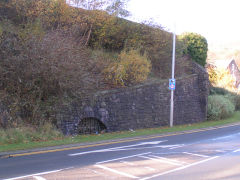
Wainfelin and Tranch Iron Mine
|

Wainfelin and Tranch Iron Mine
|
|
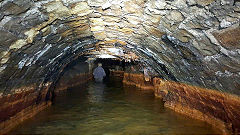
Wainfelin and Tranch Iron Mine
|

Wainfelin and Tranch Iron Mine
|
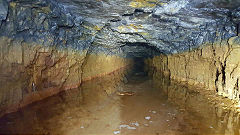
Wainfelin and Tranch Iron Mine
|
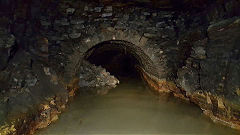
Wainfelin and Tranch Iron Mine
|
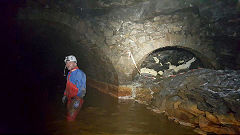
Wainfelin and Tranch Iron Mine
|
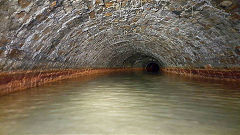
Wainfelin and Tranch Iron Mine
|
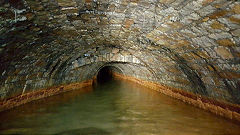
Wainfelin and Tranch Iron Mine
|

Wainfelin and Tranch Iron Mine
|
Merchants Hill - SO 2752 0163
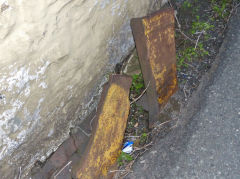
Tramplates at Merchant's Hill
|
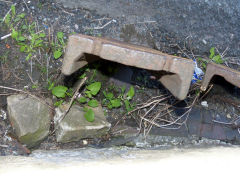
Tramplates at Merchant's Hill
|
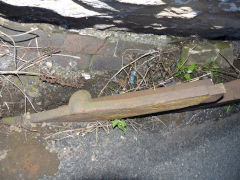
Tramplates at Merchant's Hill
|

Tramplates at Merchant's Hill
|
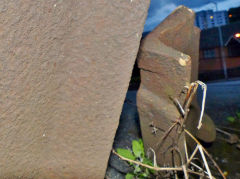
Tramplates at Merchant's Hill
|
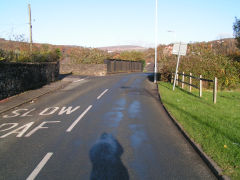
Merchants Hill low level bridge
|
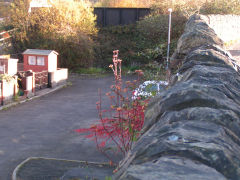
Merchants Hill low level bridge
|
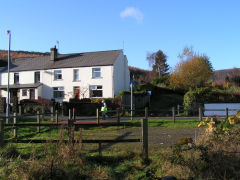
Merchants Hill high level bridge
|
Pontnewynydd Tinplate Works powerhouse - SO 2696 0171
This building is believed to be the powerhouse for Pontnewynydd Tinplate Works but has recently been demolished. I was surprised to find that I had only taken two photos of it so Miles Gladson has kindly provided some more.
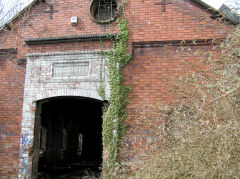
Tinplate works powerhouse
|
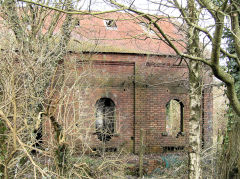
Tinplate works powerhouse
|
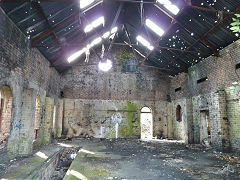
Tinplate works powerhouse
|
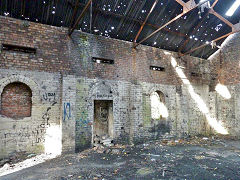
Tinplate works powerhouse
|
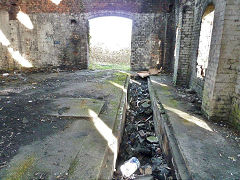
Tinplate works powerhouse
|

Tinplate works powerhouse
|
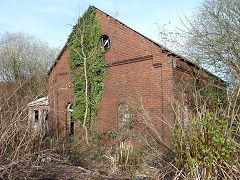
Tinplate works powerhouse
|
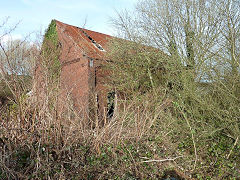
Tinplate works powerhouse
|
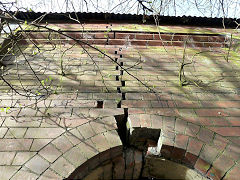
Tinplate works powerhouse
|

Tinplate works powerhouse
|

Tinplate works powerhouse
|
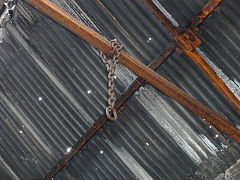
Tinplate works powerhouse
|
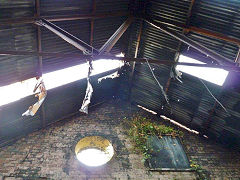
Tinplate works powerhouse
|
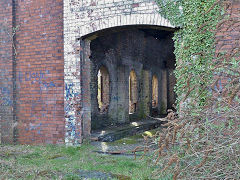
Tinplate works powerhouse
|
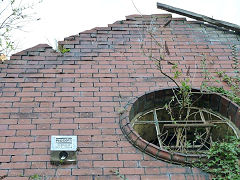
Tinplate works powerhouse
|

Tinplate works powerhouse
|
Tranch and Elled Collieries
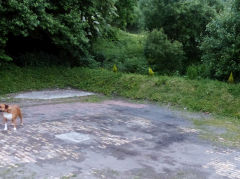
Elled Colliery levels
|
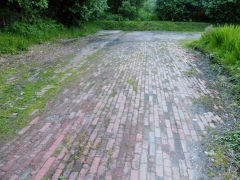
Elled Colliery levels
|
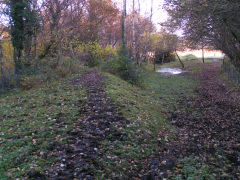
Tranch Colliery from the North
|

Tranch Colliery from the South
|
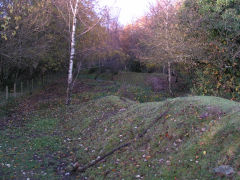
Tranch Colliery from the South
|
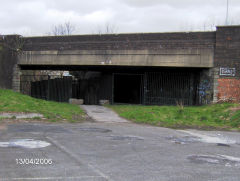
GWR low-level bridge
|
Cwm Ffrwd Oer Village and Plas-y-coed
Oak brickworks - SO 2654 0172
Gwenallt Colliery, or Jack Pit - SO 2635 0160
Viaduct Colliery - SO 2637 0191
Oak brickworks first appears on the 1899 OS map and produced bricks and pipes until the late 1960s or early 1970s. In the 1920s, John Maybury was chairman of the Oak Brick Co, Pontypool, so it is possible Maybury bricks were produced with a Maybury die at the Oak works. Across the railway line Gwenallt Colliery, or Jack Pit, was open before 1880 and was used for pumping Tirpentwys from 1929 to 1949. The site is now the local football pitch. Viaduct Colliery was primarily a GKN fireclay mine for GKN from 1900 to 1953, currently the primary school.
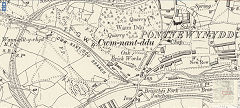
Oak brickworks, 1899
|
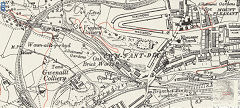
Oak brickworks, 1938
|
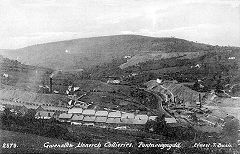
Oak brickworks and collieries
|
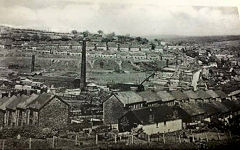
Oak Brickworks
|
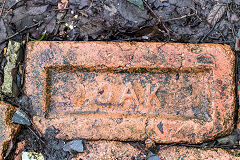
'Oak' type 1
|

'Oak' type 2
|
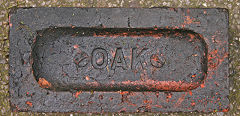
'Oak' type 3
|
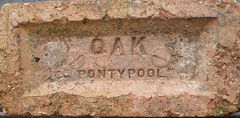
'Oak Pontypool'
|

'Oak Brick Co Pontypool', type 1
|
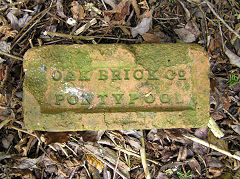
'Oak Brick Co Pontypool' type 2
|
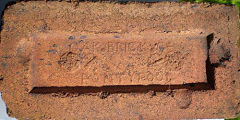
'Oak Brick Co Pontypool' type 3
|
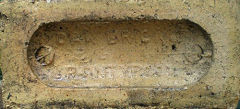
'Oak Brick Co Pontypool' type 4
|
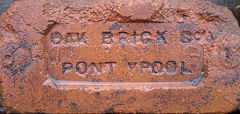
'Oak Brick Co Pontypool' type 5
|
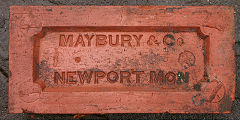
'Maybury & Co Newport Mon'
|
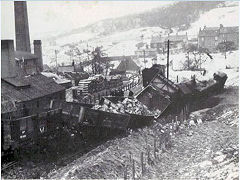
A runaway train at Oak Brickworks
|
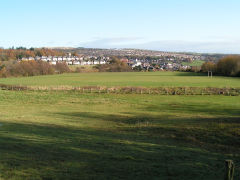
Site of Gwenallt Colliery
|
Eastern Valleys Blackvein Colliery, Plas-y-Coed - SO 2621 0138
Up to 1899 the site was Plas-y-coed Brickworks but, by 1917, had become the Eastern Valleys Blackvein Colliery, closing in 1939.

Plasycoed drainage level
|
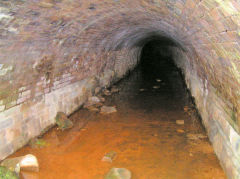
Plasycoed drainage level
|
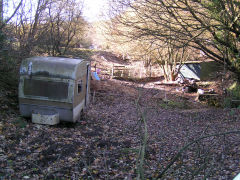
Eastern Valleys Colliery
|
Around Plas-y-Coed and Pentrepiod
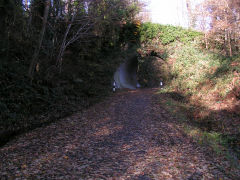
Re-inforced bridge at Cwmffrwdoer
|
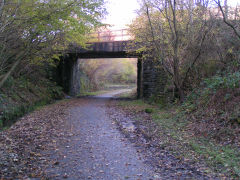
Cwmffrwdoer Halt from the South
|
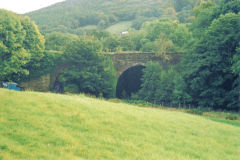
Cwmffrwdoer Viaduct
|
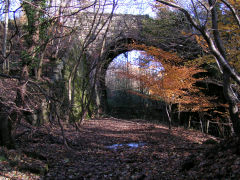
GWR Cwmffrwdoer branch
|
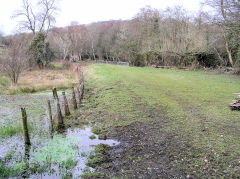
GWR Cwmffrwdoer branch
|
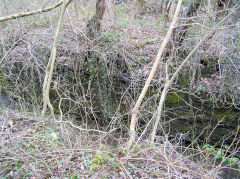
GWR branch bridge foundations
|
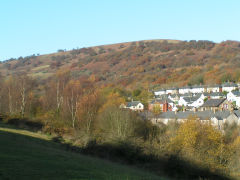
Cwm Ddu from Plas-y-coed
|
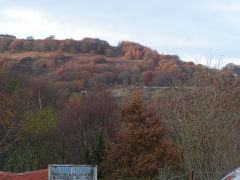
Cwm Ddu from Plas-y-coed
|
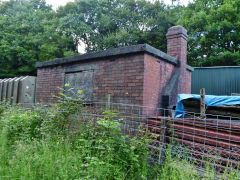
Pentrepiod platelayers hut
|
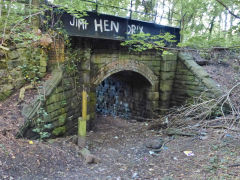
Pentrepiod underbridge
|
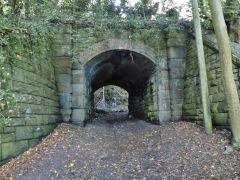
Pentrepiod underbridge
|
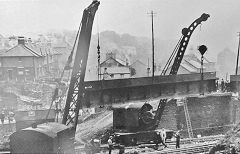
Pentrepiod underbridge
|
Acknowledgments, sources and further reading.
Thanks for the use of their photographs to :-
Clive Davies, Bill Gascoigne, Miles Gladson, Dennis Hopkins, Mike Kilner, Alan Murray-Rust, Gordon Rattenbury, Lawrence Skuse, Steve Wells and 'Coflein'
'The Wainfelin and Tranch Iron Mine' by Bill Gascoigne, November 1993. A description and history with photos and a plan of the workings.
A Guide to the Website
Industrial Wales
Collieries, Ironworks, Quarries, Railways, Canals, Tramroads, Tunnels, Culverts and so much more....
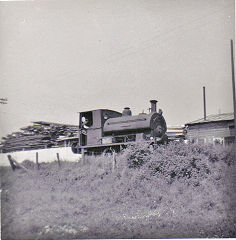
|
Brickworks of Wales
Bricks are 'History with a label' so here's the story of the Brickworks of Wales - photos, maps and the products themselves
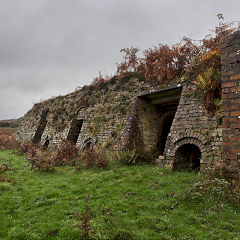
|
Around the World
My travels around the UK and the Whole Wide World in search of industries, railways, trams and mines to name a few.
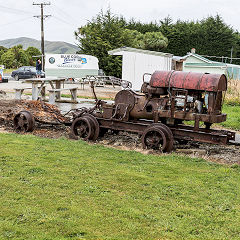
|
Boundary Stones and Mileposts
Boundary Stones, Mileposts and other markers in simple alphabetical order of their initials, name or site.

|
Ships and Shipping
Ships around the World in simple alphabetical order of their name (or apparent area if I can't read the name).

|
The Site Map and Index
A full list of all the pages of the whole website in just one place, so you should find exactly what you are looking for.

|
About the Site
The background and technical details about the site, plus a contact page and links to other sites - and a warning !!
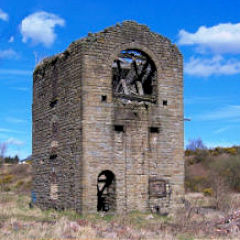
|
Contact Me
Something to add? A great photo? Something wrong? or need to know more about things? Just drop me a line here.

|
Further Reading
You can find lots of local and other very helpful websites, books, magazines and Facebook groups all listed here.
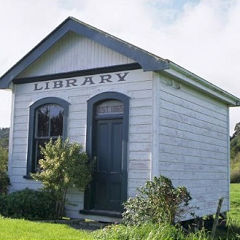
|
All rights reserved - Phil Jenkins















